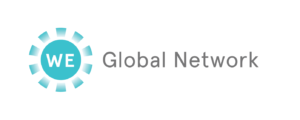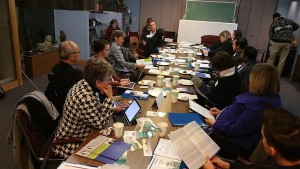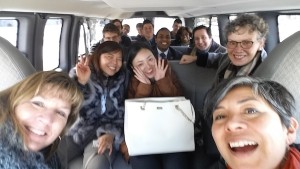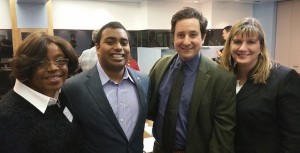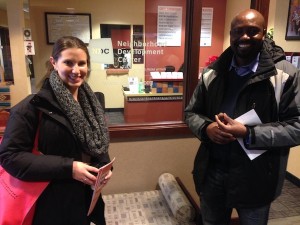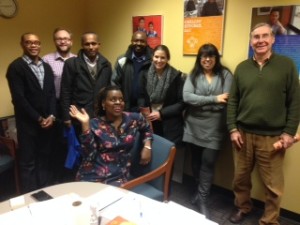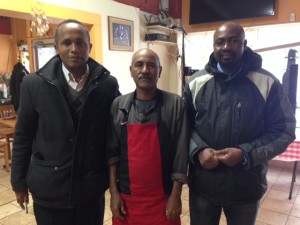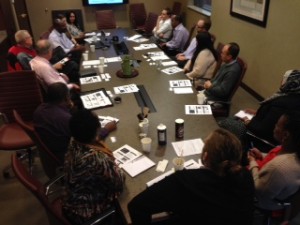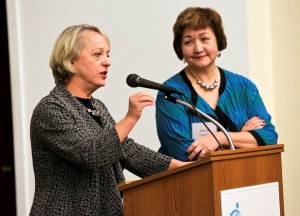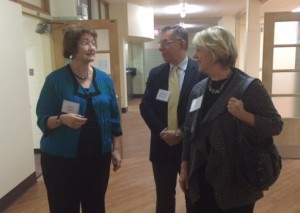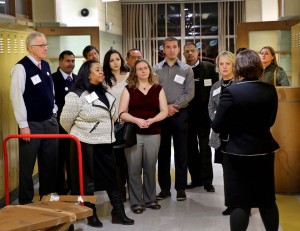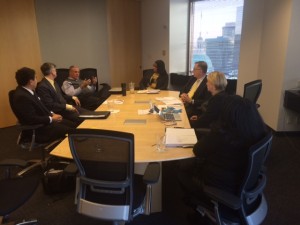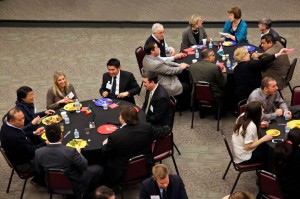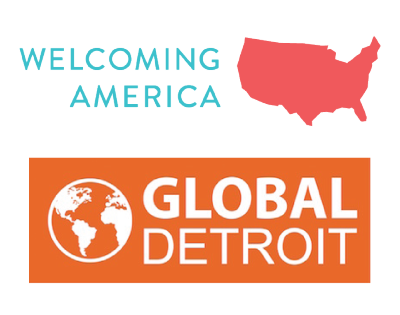Detroit Welcomes Cincinnati for Welcoming Economies City to City visit
By Global Detroit
On Monday, January 25th, a team of 9 community leaders from Cincinnati from diverse fields visited Detroit as part of the WE Global Network’s city-to-city visit program. The purpose of the WE Global Network’s city-to-city visits is to enable local immigrant economic development organizations in the Rust Belt to learn from each other’s work, and also deepen relationships with other cities in the Midwest who are doing similar work in economic development, neighborhood revitalization, and immigrant integration. The Detroit-Cincinnati visit was on of five other similar visits facilitated by the WE Global Network under grants from the Knight Foundation and JM Kaplan Fund.
The visit was over two days and began with introductions and a session designed to get to know each other better, and also address Cincinnati representatives’ most pressing interest: the retention of international students. Team Cincinnati met and heard from Global Talent Retention Initiative (GTRI) Director, Jeff Townes. Jeff outlined GTRI’s strategies for developing university and corporate partners, and for showcasing students and the 76 GOemployers that are interested in hiring international students through conferences that focus on connecting students and employers.
A 2013 GTRI and Global Detroit report notes that “58% of international students approved for Optional Practical Training (OPT) [work opportunities post-graduation allowed for most international students studying in the U.S.] through our original 7 GOuniversities stayed in Michigan after graduation (compared to 63% of the domestic population native to Michigan and 22% of the domestic students from out of state).” A recent GTRI grant report notes that the University of Michigan, Michigan State University, and Eastern Michigan University have doubled the number of international students utilizing the OPT work option after graduation from 1,066 in 2011 to 2,209 in 2014.
Other sessions during the city-to-city visits included a series of presentations by Global Detroit’s partner initiatives to outline immigrant welcoming, integration, and economic development work in Metro Detroit, as well as a tour the immigrant dense neighborhoods of Hamtramck/Detroit (BanglaTown) and Southwest Detroit. A highlight of the visit was a dinner for over 25 people, including four Detroit City Council members and/or their staffs (Council members Spivey, Castaneda-Lopez, Leland, and Benson participated in the dinner or other events).
On the visit were Mary Stagaman and Erika Fiola, Agenda 360, Althea Barnett from the Cincinnati Human Relations Commission, Sally Duffy, Sister of Charity Ministry Foundation, Daniel Rajaiah of the Mayor’s Office (and the Mayor and City Council Immigration Task Force), Rebecca Zu, City of Cincinnati, Bryan Wright, Cincinnati Community College, and Shau Zavon, Greater Cincinnati Chamber of Commerce. The organizations are in varying degrees of development on immigrant integration.
We hope to develop long lasting relationships with regular check-ins to continue to report our growth and learning on ground, and also, to learn from the development of our partner organizations.
